
Kelly Keogh, PhD, Maritime Heritage Coordinator/Maritime Archaeologist - Papahānaumokuākea Marine National Monument
May 2 - May 16, 2017
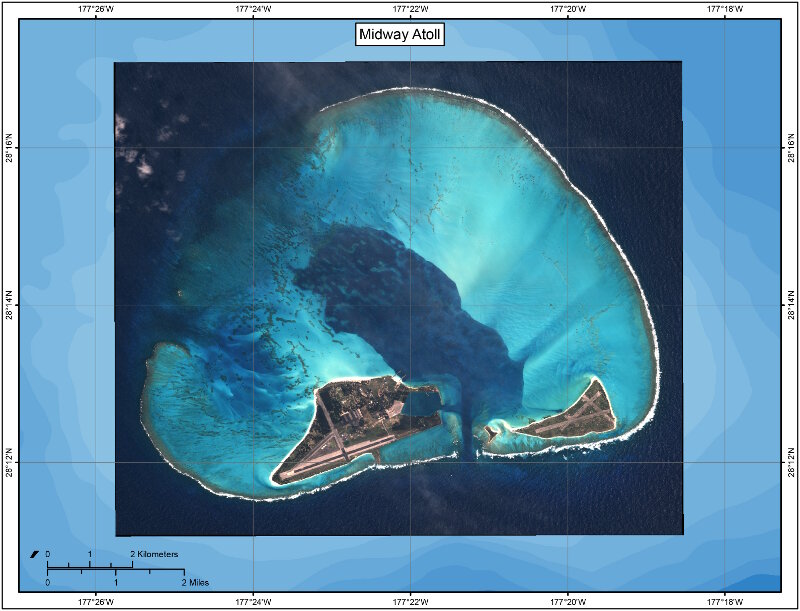
An aerial view of Midway Atoll. Image courtesy of Papahānaumokuākea Marine National Monument/NOAA. Download larger version (jpg, 4.0 MB).
Few places represent the legacy of World War II (WWII) like Midway Atoll. Located within Papahānaumokuākea Marine National Monument and World Heritage Site (PMNM, the Monument), the sunken history left undiscovered at Midway represents the material remains of one of the most consequential events in the history of the Second World War. The potential for exploration at this remote atoll in the Northwestern Hawaiian Islands is remarkable, and the possibilities are demonstrated with the recent discoveries of a rare Brewster F2A-3 Buffalo located in shallow waters of the Midway Atoll lagoon, and even more recently, the discovery of a P-40 Warhawk in 2014 and a F4U Corsair in 2015.
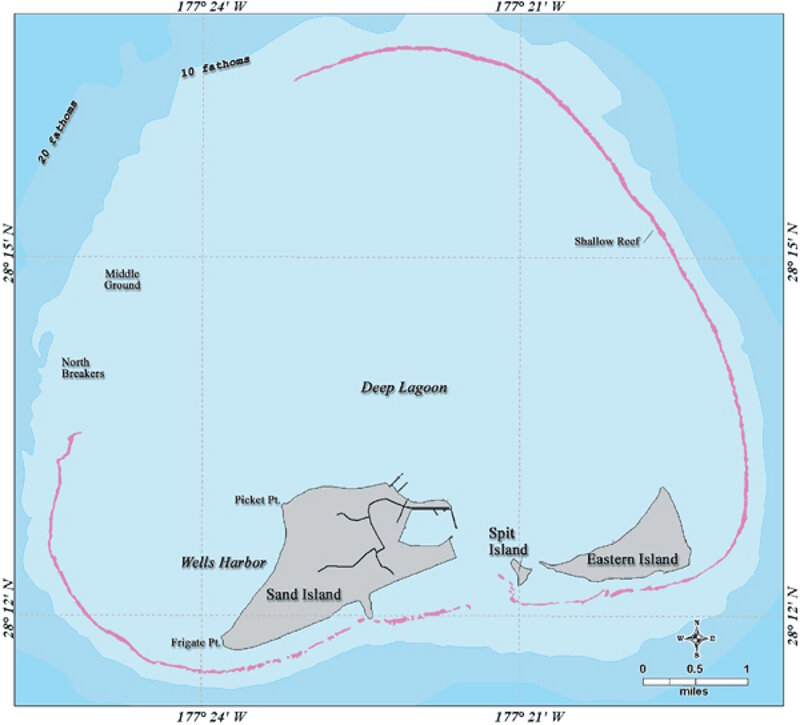
A map of Midway Atoll. Image courtesy of Papahānaumokuākea Marine National Monument/NOAA. Download image (jpg, 63 KB).
Archival research identifies at least 31 plane crashes within three miles of Midway Atoll. Dozens more are probable and many more lie three miles beyond Midway Atoll. Additional aircraft losses are reported by survivors who describe loss locations based on their first-hand experiences. Of these 31 aircraft reported lost, 22 were American and 9 were Japanese. All are considered war graves.
The Battle of Midway was one of the most decisive U.S. victories of WWII and is referred to as the turning point of the war in the Pacific. To date, four sunken aircraft have been located and documented by archaeologists at Midway Atoll, with three of these discovered in the last three years. Dozens more aircraft remain undiscovered.
In collaboration with the National Park Service’s Submerged Resources Center (NPS/SRC), East Carolina University (ECU), and Fish and Wildlife Service (FWS), PMNM will conduct two weeks of exploratory remote sensing survey at Midway Atoll in specific areas of reported and probable aircraft loss during the Battle of Midway.
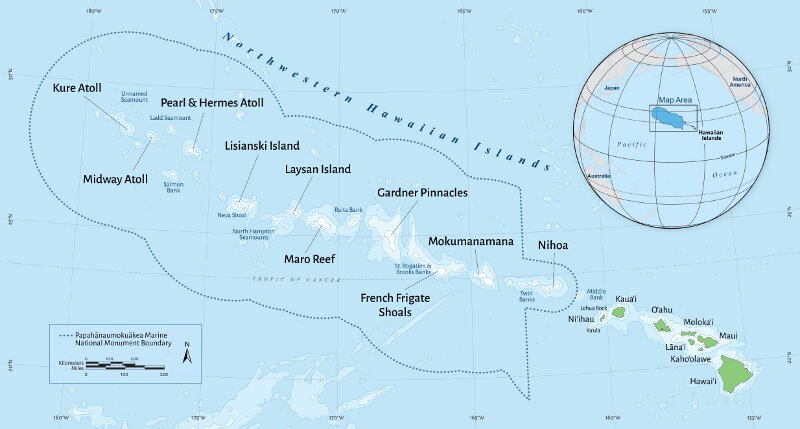
Map of Papahānaumokuākea Marine National Monument, including the expansion area designated by President Obama in 2016. Image courtesy of Papahānaumokuākea Marine National Monument/NOAA. Download larger version (jpg, 7.0 MB).
Exploration for sunken aircraft sites will also serve as an opportunity for progressive multidisciplinary survey through collaboration with PMNM’s resource protection program to survey for alien invasive species on human-made structures at Midway Atoll (specifically sunken aircraft).
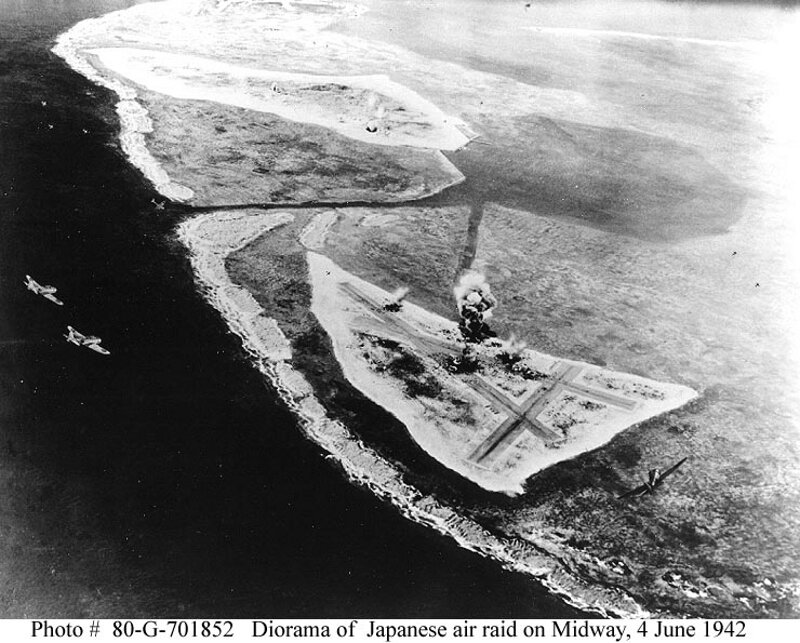
Photo of a recreation of the Japanese air raid on Midway on June 4, 1942. Image courtesy of National Archives and Records Administration. Download image (jpg, 130 KB).
Discoveries made during this research project have the potential to fill gaps in knowledge relative to the material remains of the WWII Pacific front, linking them to managed sites in Pearl Harbor, Guam, and Saipan.
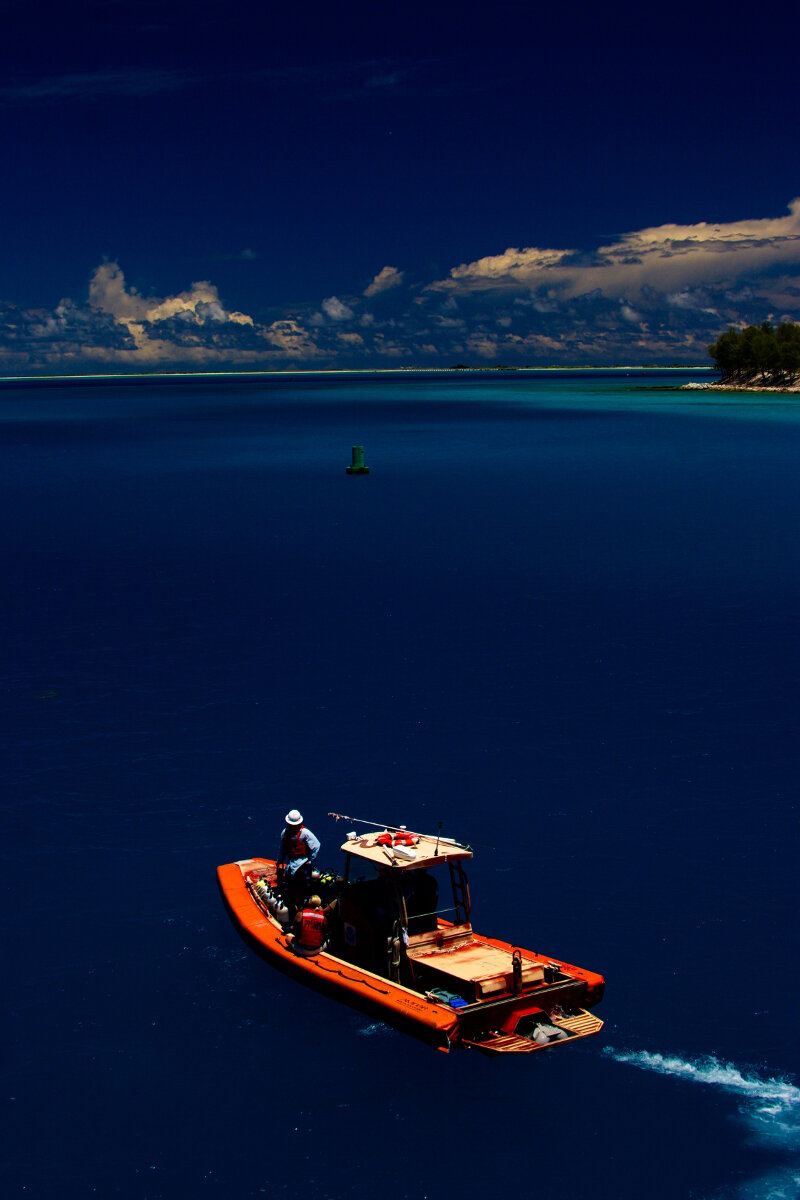
A team of maritime archaeologists prepare to survey at Midway Atoll. Image courtesy of Papahānaumokuākea Marine National Monument/NOAA. Download larger version (jpg, 3.0 MB).
During the project, scientists will explore sunken aircraft associated with the Battle of Midway, adding an important maritime heritage component to our understanding of the broader history of World War II in the Pacific. This year is the 75th anniversary of this significant event, and this project aims to raise awareness and honor the legacy of the brave men who helped to turn the tide in the Pacific during the course of the Battle of Midway.
The material culture associated with this Battle is critical to understanding connections and making comparisons between Pacific regions and better comprehending the Pacific Front of WWII. Sunken aircraft represent the tangible evidence of our nation’s naval maritime and aviation legacy and hold potential for engaging the public.
During the project, scientists will also apply cutting-edge technology and conduct multidisciplinary surveys. They will investigate legacy magnetometer anomalies, collect and ground-truth additional magnetometry data, and make discoveries that enrich the maritime and aviation history of Midway Atoll. Additionally, the project serves as an opportunity for progressive multidisciplinary invasive species survey in collaboration with PMNM’s resource protection program and advanced 3D imagery documentation and analysis. The success of this project’s exploration is increased through efforts to combine oral history research and remote sensing. Further, the multidisciplinary nature of the project is exemplary in demonstrating the comprehensive nature of NOAA’s Office of Ocean Exploration and Research projects, from exploration to interpretation and dissemination, and inclusive of remote sensing, archaeological, and biological survey through advanced technologies.